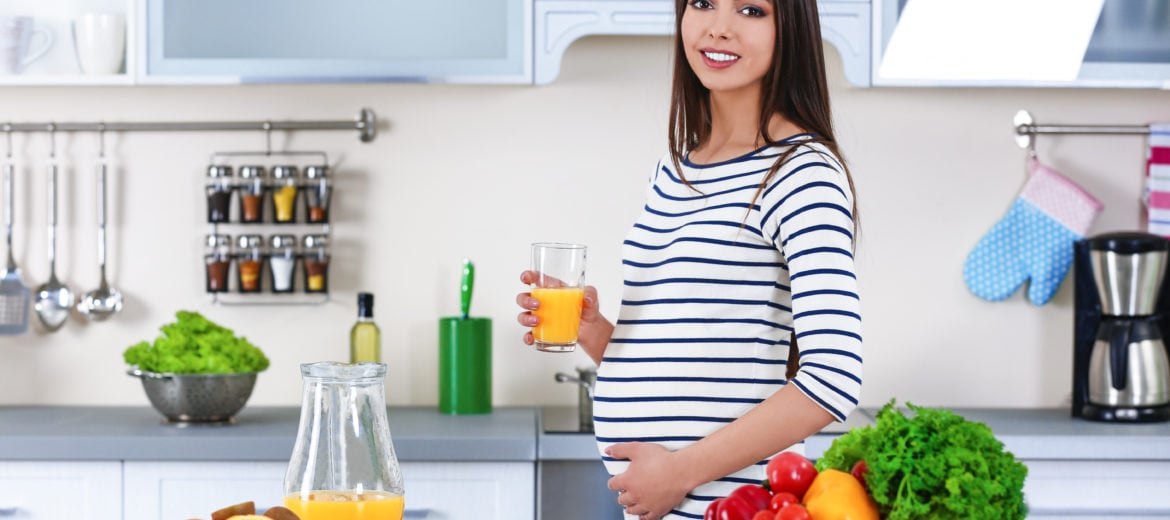If you’re worried about what to eat during pregnancy and want to make your own pregnancy diet chart, read ahead.
What You Should Eat During Pregnancy
You should include 4 essential food groups in your pregnancy diet chart. Each of these contains Indian foods that will meet your nutritional needs as well as your baby’s.
Refer to our infographic below to learn what to include in your pregnancy diet plan or read ahead.
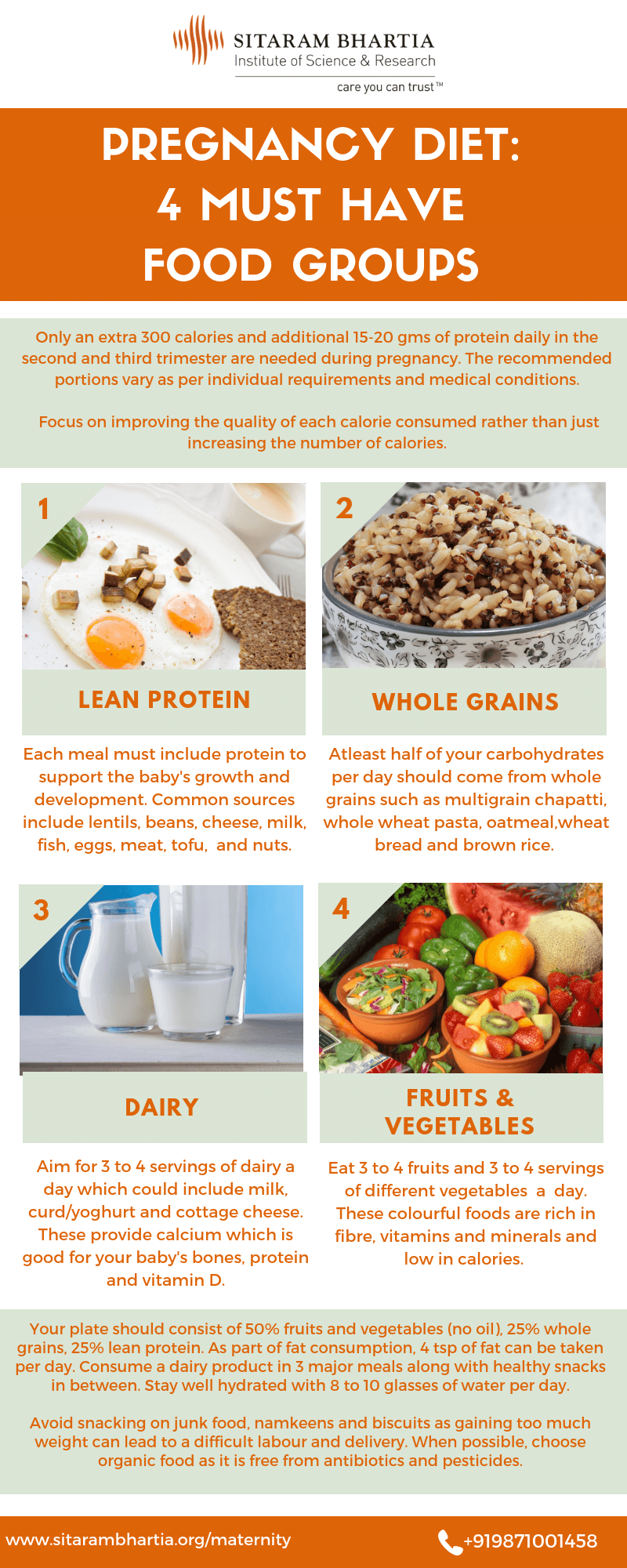
- Lean Protein
Foods such as lentils, beans, cheese, milk, fish, eggs, meat, tofu, and nuts are a rich source of protein. These foods are essential for your baby’s growth and development during pregnancy.
- Whole Grains
Switch to multigrain chapatti, whole wheat pasta, oatmeal, wheat bread and brown rice. At least half of your carbohydrates in a day should come from such whole grains.
- Dairy
Dairy should be an important component of your pregnancy diet plan. Foods such as curd/yoghurt (dahi), milk and cottage cheese (paneer) provide the much needed calcium, protein and vitamin D for your baby’s bones.
- Fruits and vegetables
Make it a point to eat vegetables with little or no oil to avoid excessive weight gain. Fruits and vegetables of different colours are rich in fibre, vitamins and minerals and are low in calories.
The main foods to avoid during pregnancy include processed foods such as ready to eat food or packaged food items; undercooked meat and unwashed produce. Binging on foods with a high fat content can also cause unnecessary weight gain and a difficult normal delivery.
When possible, substitute fruits and vegetables with organically grown produce that are free from harmful pesticides and chemicals.
Confused about your pregnancy diet chart? It is better to consult a gynecologist and nutritionist about it. Please Chat with us on WhatsApp to schedule your appointment.
How Much You Should Eat During Pregnancy
You only need an extra 300 calories and additional 15-20 gms of protein daily in the second and third trimester during pregnancy. The recommended portions vary as per individual requirements and medical conditions.
Your plate should consist of 50% fruits and vegetables (little or no oil), 25% whole grains, and 25% lean protein. Limit your oil intake to 4 tsp per day. Make sure you consume a dairy product in each of the 3 major meals and choose healthy snacks in between.
It is extremely important to stay well hydrated. You should drink 8 to 10 glasses of water per day.
When You Should Eat
You should eat small balanced meals every 3-4 hours, with a light snack in-between. Remember not to skip meals or fast during pregnancy.
Make Your Pregnancy Diet Chart
In case you are still unsure of what to eat during pregnancy, choose from our recommended food combinations and add them to your own pregnancy diet plan.
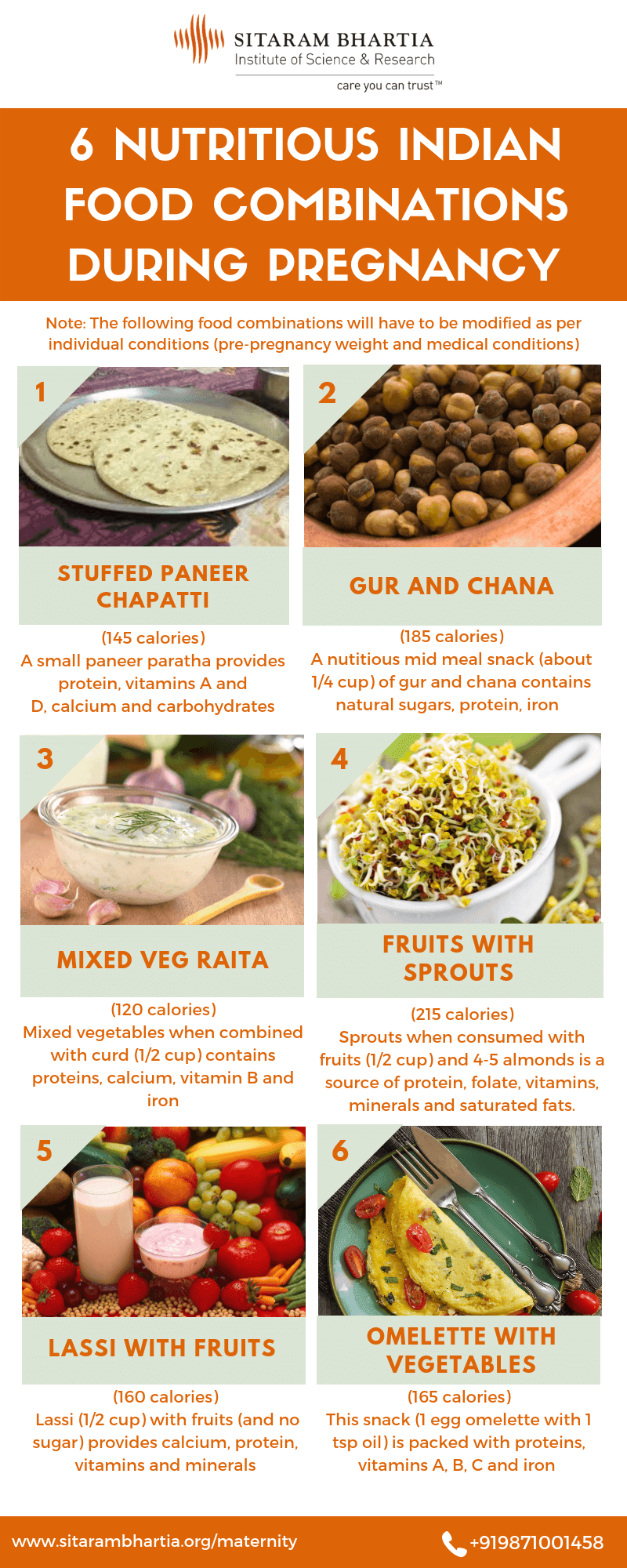
- Stuffed Paneer chapatti
(145 Calories)
Start your day with a wholesome meal that includes a stuffed paneer chapatti which provides protein, vitamin A and D, calcium and carbohydrates.
- Gur and channa
(185 calories – ¼ cup)
If you feel like snacking after breakfast and before lunch, munch on gur and channa, instead of on biscuits and namkeens. This healthy combination offers the goodness of natural sugars and benefit of protein and iron.
- Mixed Vegetable Raita
(120 calories – ½ cup)
As part of lunch, eat some yoghurt/curd with vegetables. It is not only light but it also contains protein, calcium, vitamin B and iron, which are good for you and your baby during pregnancy.
- Fruits with sprouts
(215 calories – ½ cup)
A salad consisting of sprouts with fruits and a few almonds makes a great evening snack and also provides protein, folate, vitamins, minerals and saturated fats.
- Lassi with fruits
(160 calories – ½ cup)
Another satisfying mid-meal snack is unsweetened lassi (yoghurt based drink) with fruits. The combination is a good source of calcium, protein, vitamins and minerals that you require during pregnancy.
- Omelette with vegetables
(165 calories)
An omelette stuffed with vegetables makes for an ideal breakfast item, and gives you protein, vitamins A,B,C and iron.
Pregnancy Diet Chart Samples
You could also refer to the different pregnancy diet charts below to get a better idea of your recommended food intake according to your weight and height.
For Underweight Women
Megha Kumar, a marketing professional with a leading hotel chain came to us when she was expecting her first child. All of 5’2 and weighing only 42 kgs, she was put on a pregnancy diet that would give her a minimum of 2500 calories (inclusive of the extra 500 calories) in her second and trimester.
If like Megha, you too are underweight, you could refer to the pregnancy diet chart we designed for her.
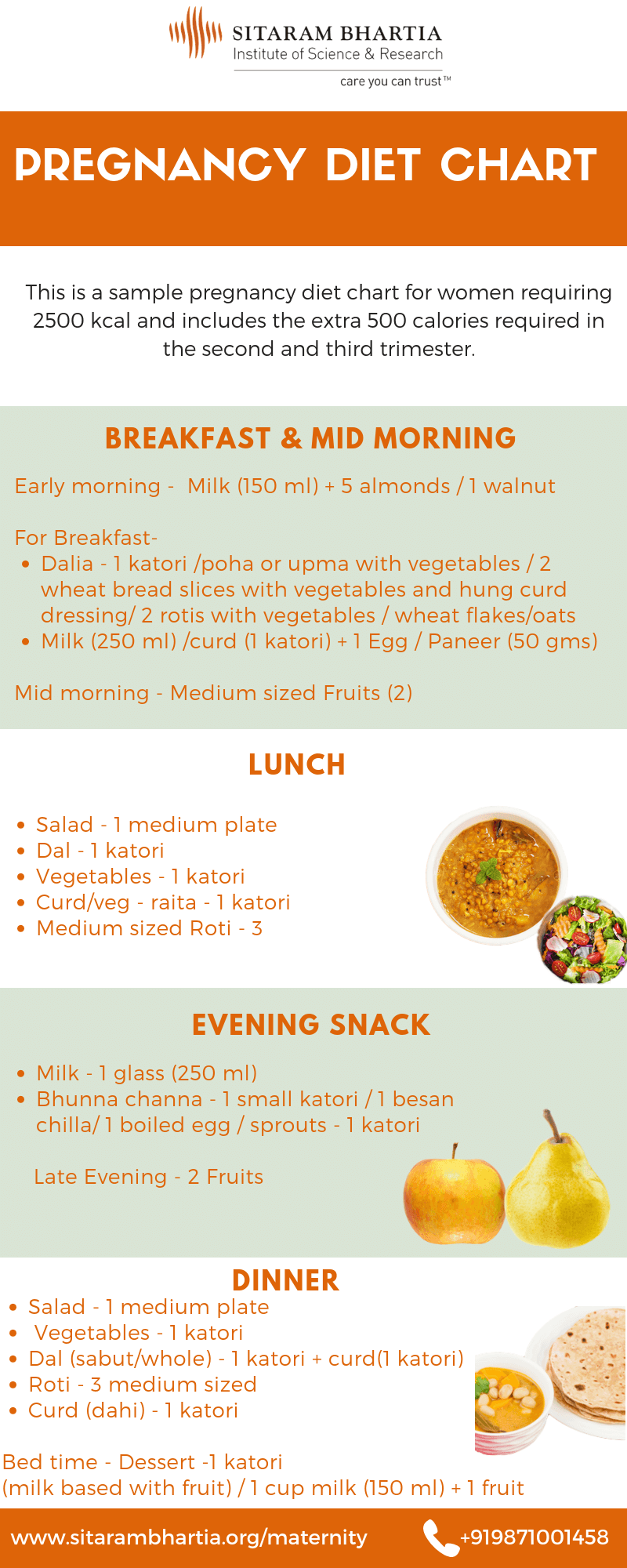
The required calorie intake will differ according to your exact BMI. This chart does not cover pregnancy with twins and gestational diabetes.
For Women with Normal or Healthy Weight
Dimple Verma who ran her own fitness and lifestyle consultancy weighed 50 kgs and was 5 ft tall. Running her own company meant being on the road most of the time. And when she wasn’t, she was running around her 5 year old son. Keen to keep up with it all, she worked on building her stamina by following a healthy diet with regular exercise. Since her pre-pregnancy weight was just fine, the dietitian suggested 2000 calories (inclusive of extra 300 calories) in the second and trimester.
Dimple followed the pregnancy diet chart below to meet her calorie requirements.
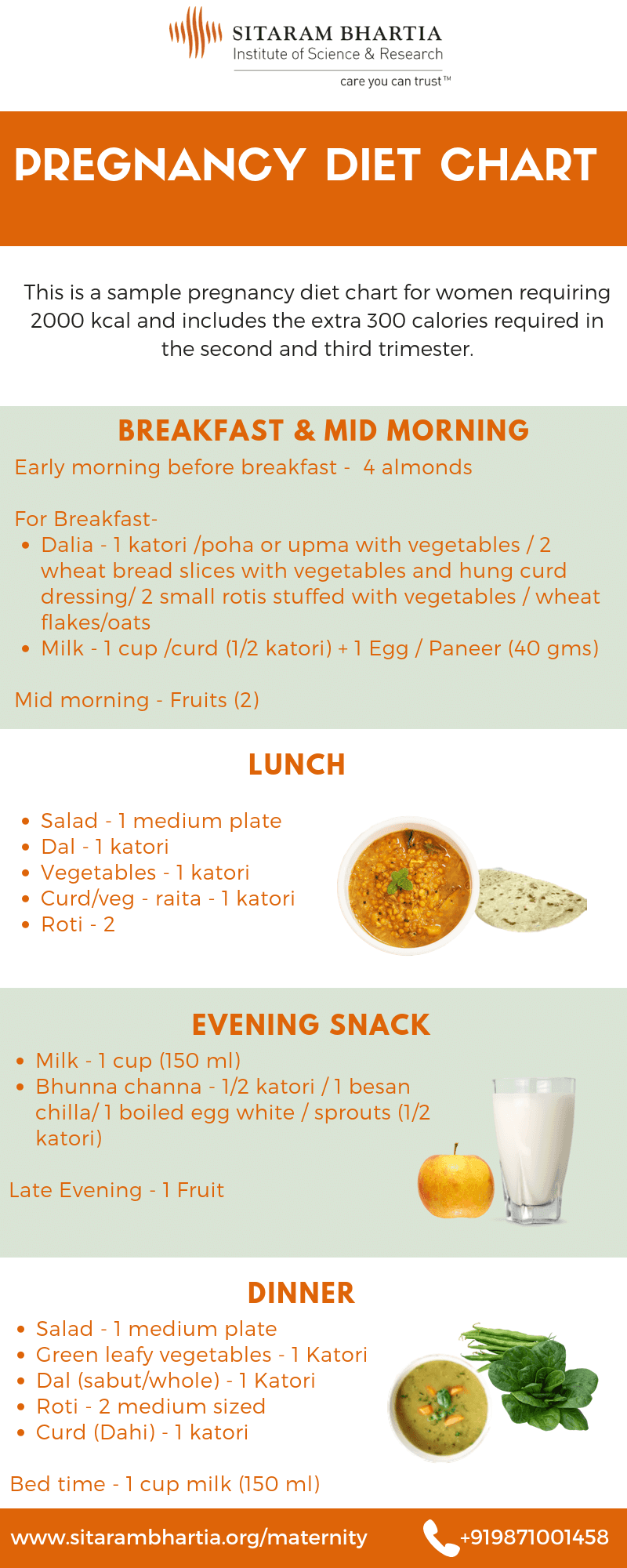
As you advance toward motherhood, focus on improving the quality of each calorie you consume instead of just increasing the number of calories.
We hope you found this article helpful. If you still have any questions regarding your pregnancy diet and would like to schedule an appointment with a Women Health Educator, please call us on +919871001458.
This blog post has been written with editorial inputs from senior obstetrician-gynecologists who practice exclusively at Sitaram Bhartia Hospital in South Delhi.
More Resources

